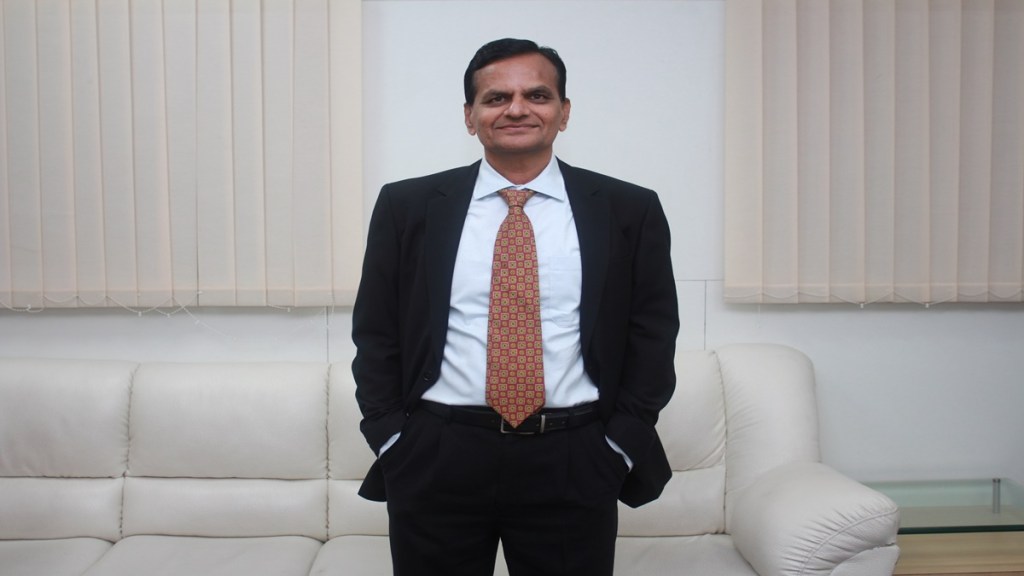Equitas Small Finance Bank narrowly missed the asset quality criteria needed for a universal bank licence. In an interview with FE, managing director and CEO PN Vasudevan explains among other things why shedding the ‘small finance bank’ label is crucial for Equitas. Excerpts:
Credit-deposit mismatch is a major concern for large commercial banks. How is this playing out for SFBs?
We all have done well in raising public deposits despite some confusion around the ‘small finance bank’ label. People often wonder if we are a finance company or a real bank, and whether it’s safe to invest their money, even after seven-eight years of SFBs’ existence. Despite this hesitation, none of us has had trouble raising deposits. Money has never been a constraint for growth because we offer 1-2% higher interest rates than larger banks.
How have SFBs evolved on the credit side?
One major trend in the industry is portfolio diversification. When SFB licences were granted seven-eight years ago, most of us were NBFC microfinance institutions, with 50-90% of our exposure to unsecured microfinance. After becoming banks, a key shift was to increase the secured loan book and reduce unsecured loans to a reasonable level. While the RBI does not mandate a specific portfolio mix, unsecured loan books need to be balanced.
What is Equitas’ loan book mix?
Our portfolio is fairly well-diversified. Our loan book consists of 83% secured loans and 17% unsecured loans (microfinance). Of the secured portion, 38% is small business loans, 25% commercial vehicle loans, 12% in affordable housing loans and the remaining 7-8% in MSMEs and lending to NBFCs. We launched credit cards in the fourth quarter and are also introducing personal loans, both of which are unsecured.
Why did you venture into credit cards and personal loans?
Lending to the informal sector typically includes small business loans (SBLs), affordable housing finance and consumption loans. Various government surveys indicate unmet credit demand of around Rs 25 lakh crore for SBLs and Rs 10 lakh crore for affordable housing. Many customers in the informal sector are ineligible for credit cards from other banks due to the profile issue. However, there is significant potential to finance their needs because they do have consumption needs like buying home appliances, travel requirements and medical expenses. The unmet demand for consumption loans of the informal economy is estimated to be ₹15-20 lakh crore, that’s a huge market to tap.
Isn’t it risky to increase the share of unsecured loans?
For personal loans, we will target the salaried segment and existing bank customers for the first two years. Credit cards will primarily be offered to existing customers. For example, if I have provided a ₹10 lakh SBL or affordable housing loan, I can issue a credit card with a ₹80,000-Rs 1 lakh limit to that customer. This is feasible because the loan is secured by a property worth ₹15 lakh. While it may increase my loan-to-value ratio, the secured asset mitigates the risk.
We aim to keep our total unsecured loans, including microfinance, credit cards and personal loans, below 20% of our total loan book.
What other new products do you have in the pipeline?
A year ago, the RBI allowed SFBs to become authorised dealer category 1 (AD Cat 1) banks, and we have received our AD Cat 1 licence. This enables us to offer products like FCNR (B) deposits, inward and outward remittances, and trade finance products such as trade credit, import/export credit and packing credit to SMEs, similar to universal banks.
Given our existing NRI customer base, we plan to launch FCNR (B) deposits in the third quarter, followed by remittances in Q4, with trade finance products being expected next year.
What happened to your universal bank ambitions?
The RBI issued guidelines for SFBs’ transitioning to universal banks, which we narrowly missed due to our net non-performing assets (NNPA) ratio being 1.1% instead of the required less than 1% for the preceding two years. In the June quarter, we made additional provisions to reduce it to below 1%. We need to maintain this ratio through FY24-25 and FY25-26 and we will apply as soon as we become eligible to reapply under the new norms.
What are the benefits of becoming a universal bank?
Currently, 80-85% of our loans are under priority sector lending norms. If we become a universal bank and still maintain 80% of PSL loans, we can sell the excess to other banks that are short of PSL norms, generating fee income. Additionally, removing the ‘small finance bank’ label will improve public perception and help boost deposits.
SFBs are required to have a capital adequacy ratio of 15%, whereas universal banks need only 9%. While universal banks must maintain a capital buffer to address operational and liquidity risks, we will still have a 4% capital buffer that we can leverage.

